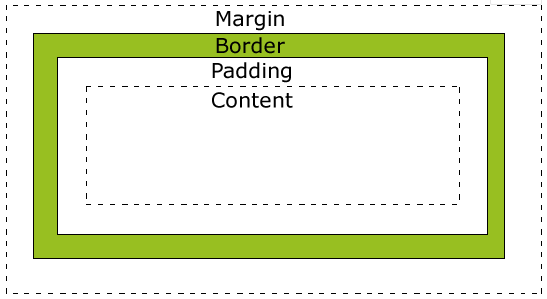高级选择器/CSS的继承性和层叠性(坑)/模型/布局的方式(浮动)
一.关于上篇博客的内容回顾:
1.标签的嵌套
行内标签和块标签
行内标签不可以嵌套块级标签,但不是绝对
块标签嵌套块标签,行内标签
但是P标签的子标签只能是行内元素,表单元素,图片
2.table
<tr> <td></td> </tr>
3.form action行为methods:get||post enctype=""一定要提交文件到服务器,一定是post情求

lable
for:与input的id有很大关系
input 重要
type
text: 普通文本*
password: 密码本*
submit: *
radio: 单选框
checkbox: 多选
name
value
select
option
textarea
rows
cols
4.CSS
(1).三种引入方式:
行内样式>内接样式和外接样式
(2).基本选择器
选择器的作用:选中标签,设置属性
①.标签选择器:
选择是"共性",不管标签嵌套多少层

<div id="box" class="box">娃哈哈</div> div{ color: red; } div div div div
②.id选择器
选择的是"特性",id是唯一的,未来与JS有很大关联

#box{
color: yellow;
}
③.class选择器
选择的是共性,类选择器可以设置多个,一个标签也可以设置多个

.box{
color: green
}
.active{
color: red
}
④.通配符选择器,重置样式

*{
padding: 0;
margin: 0;
}
ul{
list-style: none
}
a{
text-decoration: none
}
4.class的使用

<!DOCTYPE html> <html> <head> <meta charset="UTF-8"> <title>class的使用</title> <style type="text/css"> .lg{ font-size: 30px; } .lv{ color: green; } .un{ /*text-decoration:设置文本修饰;underline:下划线*/ text-decoration: underline; } </style> </head> <body> <p id="p1" class="lg lv">娃哈哈</p> <p id="p2" class="lv un">乳娃娃</p> <p id="p3" class="lg un">爽歪歪</p> </body> </html>
二.高级选择器
1.后代选择器
儿子,孙子,重孙子
div ul li p{
color: red;
}

<!DOCTYPE html> <html> <head> <meta charset="UTF-8"> <title>后代选择器</title> <style type="text/css"> .father p{ color: red; } /*.father .sww{ color: blue; }*/ </style> </head> <body> <div class="father"> <p>娃哈哈</p> <ul> <li> <p class="sww">爽歪歪</p> </li> </ul> </div> <p class="rww">乳娃娃</p> </body> </html>
2.子代选择器
只能是亲儿子
使用>表示子代选择器。比如div>p,仅仅表示的是当前div元素选中的子代(不包含孙子....)元素p
div>p{
}

<!DOCTYPE html> <html> <head> <meta charset="UTF-8"> <title>子代选择器</title> <style type="text/css"> .father>ul>li{ background-color: blue; } .content{ color: red; } </style> </head> <body> <div class="father"> <p>娃哈哈</p> <p>娃哈哈</p> <div class="content"> <p>乳娃娃</p> </div> <ul> <li> 爽歪歪 <ul> <li>优酸乳</li> </ul> </li> </ul> </div> </body> </html>
3.组和选择器
多个选择器组和到一起共同设置样式
div,p,a,li,span{
font-size:14px
}

<!DOCTYPE html> <html> <head> <meta charset="UTF-8"> <title>组和选择器</title> <style type="text/css"> div,p,a,span{ font-size: 20px; } </style> </head> <body> <div>我的天</div> <p>我的地</p> <a href="#">我的人民币</a> <span>嘿嘿嘿</span> </body> </html>
4.交集选择器
使用.表示交集选择器。第一个标签必须是标签选择器,第二个标签必须是类选择器 语法:div.active

<!DOCTYPE html> <html> <head> <meta charset="UTF-8"> <title>交集选择器</title> <style type="text/css"> div{ color: red; } div.active{ color: green; } </style> </head> <body> <div class="active">娃哈哈</div> </body> </html>
5.属性选择器
属性选择器,字面意思就是根据标签中的属性,选中当前的标签。
input[type="text"]

<!DOCTYPE html> <html> <head> <meta charset="UTF-8"> <title>属性选择器</title> <style type="text/css"> form input[type="text"]{ background-color: red; } form input[type="password"]{ background-color: blue; } form #user{ background-color: yellow; } </style> </head> <body> <form action=""> <input type="text" id="user" /> <input type="password" /> </form> </body> </html>
6.伪类选择器: LoVe HAte
伪类选择器一般会用在超链接a标签中,使用a标签的伪类选择器,我们一定要遵循"爱恨准则" LoVe HAte
a:link 没有被访问的
a:visited 访问过后的
a:hover 鼠标悬停的时候
a:active 摁住的是时候

<!DOCTYPE html> <html> <head> <meta charset="UTF-8"> <title>伪类选择器</title> <style type="text/css"> /*没有被访问时的a标签的颜色*/ a:link{ color: aquamarine; } /*鼠标悬停的时候的a标签的颜色*/ a:hover{ color: red; } /*鼠标摁住时的a标签的颜色*/ a:active{ color: blue; } /*访问过后的a标签的颜色*/ a:visited{ color: darkgray; } span:hover{ color: red; font-size: 24px; text-decoration: underline; } .child{ display: none; } .father:hover .child{ color: red; display: block; } </style> </head> <body> <a href="#">百度一下</a> <span>娃哈哈</span> <div class="father"> 乳娃娃 <p class="child">爽歪歪</p> </div> </body> </html>
7.伪元素选择器
p:before 在...的前面添加内容一定要结合content
p:after 在...的后面添加内容与后面的布局有很大关系

<!DOCTYPE html> <html> <head> <meta charset="UTF-8"> <title>伪元素选择器</title> <style type="text/css"> p:first-letter{ color: red; font-size: 23px; } /*用伪元素属性一定是content*/ /*伪元素选择器与后面的布局有很大的关系*/ p:before{ content: "$"; } p:after{ content: "."; } .box2{ /*需求:这个盒子一定是块级标签, span->块,且不再在页面中占位置,以后与布局有很大的关系*/ /*隐藏元素不占位置*/ /*display: none;*/ display: block; /*隐藏元素不占位置*/ /*display: none;*/ visibility: hidden; height: 0; } </style> </head> <body> <p class="box"> <span>娃哈哈</span> </p> <span class="box2">爽歪歪</span> <div>乳娃娃</div> </body> </html>
三.CSS的继承性和层叠性(坑)
1.继承性
继承:给父级设置一些属性,子级继承了父级的该属性,这就是我们的css中的继承
记住:有一些属性是可以继承下来 : color 、 font-*、 text-*、line-* 。主要是文本级的标签元素
盒模型的属性是不可继承下来的
a标签有特殊情况,设置a标签的字体颜色一定要选中a,不要使用继承性

<!DOCTYPE html> <html> <head> <meta charset="UTF-8"> <title>CSS的继承性</title> <style type="text/css"> .box{ color: red; } .box a{ color: blue; } .box p{ color: royalblue; font-size: 30px; background-color: aquamarine; /*文本的对齐方式*/ text-align: right; } span{ background-color: darkgray; } </style> </head> <body> <div class="box"> 娃哈哈 <a href="#">百度</a> <p> 乳娃娃 <span>爽歪歪</span> </p> </div> </body> </html>
2.层叠性
层叠性: 权重的标签覆盖掉了权重小的标签,说白了 ,就是被干掉了
权重: 谁的权重大,浏览器就会显示谁的属性
数:id的数量 class的数量 标签的数量,顺序不能乱
(1).行内> id > class > 标签****
1000>100>10>1
(2).数数,数id,class标签
(3).先选中标签,权重一样,以后设置为主
(4).继承来的属性,它的权重为0,与选中的标签没有可比性
(5).如果都是继承来的属性,保证就近原则
(6).都是继承来的属性,选择的标签一样近,再去数权重

<!DOCTYPE html> <html lang="en"> <head> <meta charset="UTF-8"> <title>Document</title> <style> /*css层叠性 权重 谁的权重大就会显示谁的样式*/ /*如何看权重 数数选择器 id class 标签*/ /*1 0 0*/ #box{ color: yellow; } /*0 1 0*/ .box{ color: green; } /*0 0 1*/ div{ color: red; } /* id > 类 > 标签*/ </style> </head> <body> <div class="box" id="box">猜猜我是什么颜色</div> </body> </html>

<!DOCTYPE html> <html lang="en"> <head> <meta charset="UTF-8"> <title> </title> <style> /*1 3 0 */ #father1 .box2 #father3 p{ color: yellow; } /*0 4 0*/ .box1 .box2 .box3 .box4{ color: red; } /*2 1 1*/ #father1 #father2 .box3 p{ color: green; } </style> </head> <body> <div class="box1" id="father1"> <ul class="box2" id="father2"> <li class="box3" id="father3"> <p class="box4" id="child">猜猜我的颜色</p> </li> </ul> </div> </body> </html>

<!DOCTYPE html> <html lang="en"> <head> <meta charset="UTF-8"> <title> </title> <style> /*继承来的属性 它的权重为0,跟选中的标签没有可比性*/ #father1 #father2 #father3{ color: red; } #father1 .box2 .box3 p{ color: green; } </style> </head> <body> <div class="box1" id="father1"> <ul class="box2" id="father2"> <li class="box3" id="father3"> <p class="box4" id="child">猜猜我的颜色</p> </li> </ul> </div> </body> </html>

<!DOCTYPE html> <html lang="en"> <head> <meta charset="UTF-8"> <title> </title> <style> /*继承来的属性 权重为0*/ /*如果是继承来的熟悉,就近原则,谁更深入谁厉害*/ #father1 .box2{ color: red; } .box1{ color: green; } </style> </head> <body> <div class="box1" id="father1"> <ul class="box2" id="father2"> <li class="box3" id="father3"> <p class="box4" id="child">猜猜我的颜色</p> </li> </ul> </div> </body> </html>

<!DOCTYPE html> <html lang="en"> <head> <meta charset="UTF-8"> <title> </title> <style> /*都是继承来的 ,都一样深*/ #father1 #father2 .box3{ color: red; } #father1 .box2 .box3{ color: green; } </style> </head> <body> <div class="box1" id="father1"> <ul class="box2" id="father2"> <li class="box3" id="father3"> <p class="box4" id="child">猜猜我的颜色</p> </li> </ul> </div> </body> </html>
四.盒模型
在CSS中,"box model"这一术语是用来设计和布局时使用,然后在网页中基本上都会显示一些方方正正的盒子。我们称为这种盒子叫盒模型。
1.盒模型示意图

2.盒模型的属性:
width: 内容的宽度
height: 内容的高度
padding: 内边距, 边框到内容的距离
border: 边框, 就是指盒子的宽度
margin: 外边距, 盒子边框到附加盒子的距离

<!DOCTYPE html> <html lang="en"> <head> <meta charset="UTF-8"> <title>Document</title> <style> .box{ width: 200px; height: 200px; background-color: red; padding: 50px; border: 10px solid green; margin-left: 50px; } </style> </head> <body> <!-- width:内容的宽度 height:内容的高度 padding:内边距 border:边框 margin:外边距 --> <div class="box"></div> </body> </html>
3.盒模型的计算:
如果保证盒模型的大小不变,加padding就一定要减width或者减height
前提是:在标准文档流中
padding: 父子之间调整位置
margin: 兄弟之间调整位置

<!DOCTYPE html> <html lang="en"> <head> <meta charset="UTF-8"> <title>Document</title> <style> .box{ width: 180px; height: 180px; /*padding-left: 100px;*/ /*padding-left: 100px;*/ padding-left: 20px; padding-top: 20px; border: 1px solid red; } span{ background-color: green; } .ttt{ margin-left: 30px; } </style> </head> <body> <!-- 202*202 --> <div class="box"> <span>alex</span> <span class="ttt">alex</span> </div> <div class="box"> <span>alex</span> </div> </body> </html>
五.浮动
浮动能实现元素并排
盒子一浮动,就脱离了标准文档流,不占位置

<!DOCTYPE html> <html> <head> <meta charset="UTF-8"> <title>浮动</title> <style type="text/css"> *{ padding: 0; margin: 0; } .box{ width: 100%; height: 40px; background-color: #333; } .box_suoj{ width: 1226px; height: 40px; margin-left: auto; margin-right: auto; } .box .box_l{ width: 550px; height: 40px; background-color: green; float: left; } .box .box_shopp{ width: 100px; height: 40px; background-color: yellow; float: right; } .box .box_info{ width: 200px; height: 40px; background-color: purple; float: right; margin-right: 20px; } </style> </head> <body> <div class="box"> <div class="box_suoj"> <div class="box_l"></div> <div class="box_shopp"></div> <div class="box_info"></div> </div> </div> </body> </html>




 浙公网安备 33010602011771号
浙公网安备 33010602011771号